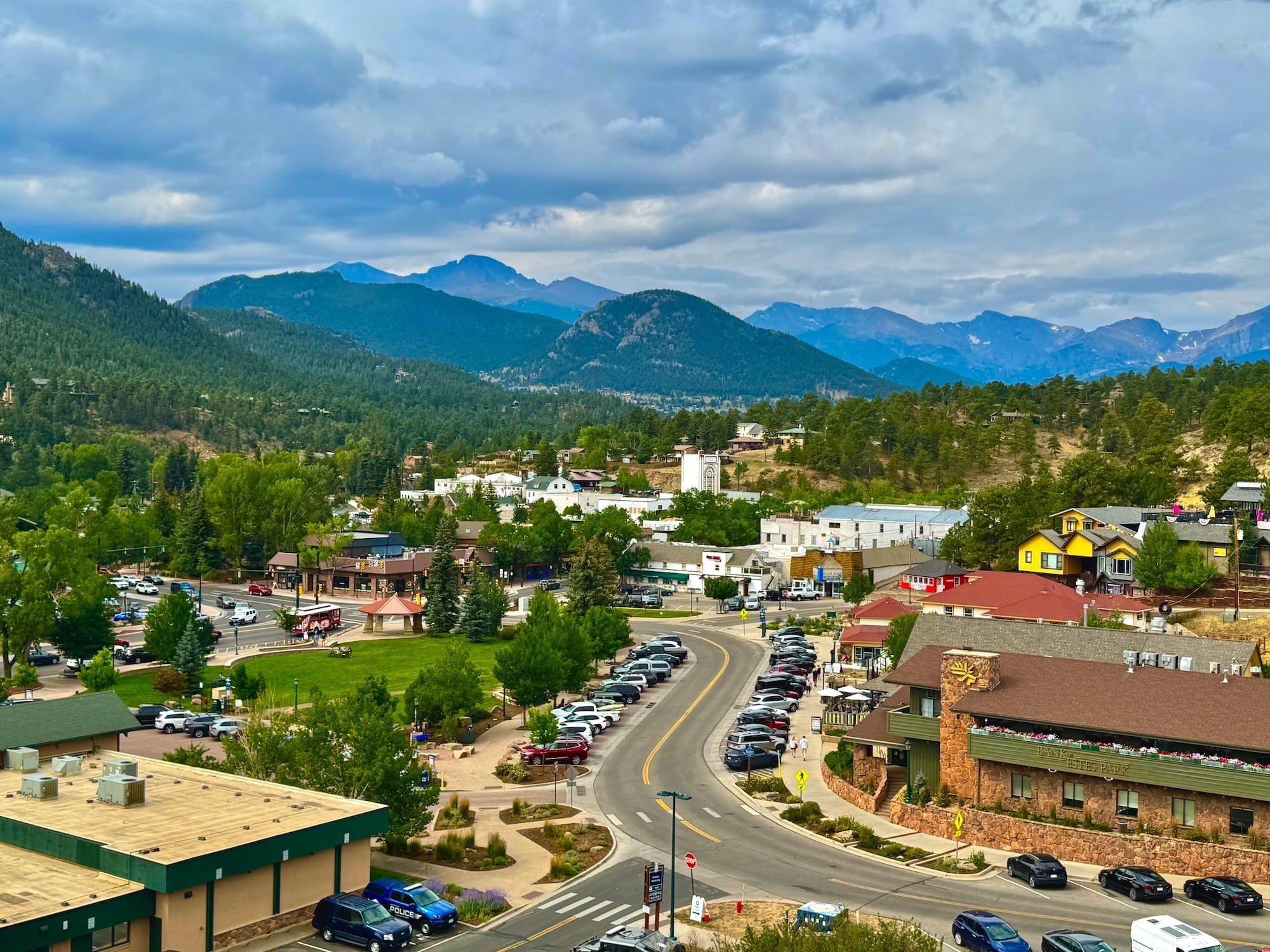Policy
Our Housing Crisis Doesn't Care Whether It's A Big City Or Not
Estes Park, CO, a resort town in the Rockies, illustrates how fears of density run deep, even in the smallest of towns in a state that passes laws to encourage more density.

On a summer evening in Estes Park, Colorado, the sidewalks fill with hikers fresh from a day in Rocky Mountain National Park.
Restaurants hum with activity. Shop clerks bag souvenirs, and hotel staff check in waves of tourists. Beneath that postcard charm, however, lies a quieter struggle: many of the workers who keep this resort town running face a lack of housing options.
In a community of about 5,000, where neighbors tend to know one another by name, one might imagine a strong sense of responsibility around housing. Yet the refrain of “not in my backyard” rings as loudly here as it does in much larger cities, including Denver, an hour away.
Workers in Estes Park’s restaurants and hotels tell familiar stories of housing challenges. A kitchen manager at The Stanley, the 1909 hotel that inspired Stephen King’s book "The Shining," says she has no hope of buying a home.
At a popular restaurant on the main strip, a manager says he was fortunate enough to find an accessory dwelling unit behind a home. One of his employees, however, despite working two jobs, lives in Longmont — a Denver suburb 45 minutes away — and commutes daily.
Town officials, like leaders in resort communities across the country, are seeking workforce housing solutions to help employees gain a foothold in markets where prices far outpace service-sector wages. Yet nearly every proposal runs into the same resistance: fears that added density will erode small-town character.
It’s the same argument raised against light-density housing in cities many times the size of Estes.
It's pretty shocking how fearful we seem about fellow humans and giving them a place to live,” Scott Moulton, executive director of the Estes Park Housing Authority, tells The Builder's Daily.
A Common Resort-Town Challenge
From Aspen, Vail, and Steamboat Springs in Colorado to Jackson Hole, Wyoming, and Martha’s Vineyard, Massachusetts, resort towns share Estes Park’s struggles with workforce housing.
Unlike major metropolitan areas, these communities face unique pressures. Second homes owned by wealthy seasonal residents drive prices higher, while the spread of short-term rentals further limits housing for workers.
Some towns invest directly in solutions. Aspen and Killington, Vermont, for example, are building deed-restricted and employer-sponsored housing to ensure units remain available to locals rather than being converted into second homes or Airbnb-style rentals.
Vail’s “InDEED” program purchases deed restrictions from homeowners and requires units to be occupied by local workers. It also offers cash incentives to landlords willing to switch from short-term tenants to long-term renters.
Other strategies include zoning changes to encourage accessory dwelling units, hotel conversions, rental and down payment assistance programs, sales taxes on luxury properties earmarked for housing funds, and financial incentives to encourage landlords to provide housing for seasonal staff.
State Policy, Limited Impact
Colorado enacted new housing laws this year to expand supply and improve affordability, but most of those measures have little effect in places like Estes Park.
The reforms legalized ADUs statewide and loosened restrictions on duplexes and triplexes in cities of 100,000 or more. They also streamlined permitting for multifamily buildings near transit corridors and placed new limits on how large cities can block housing types — efforts aimed at spurring more “missing middle” options.
Historical Housing Shortages
Moulton notes that signs of Estes Park’s housing problems go back decades. He says the housing authority’s board chair often points to a 1968 newspaper article describing Estes Park’s housing shortage.
You could plop that into any newspaper now and it — at least as of 12 months ago — would have been the same,” Moulton says. “You wouldn't know it was nearly 60 years old at this stage. With our community, like every other gateway-style community, tourist-driven economy, it's always been an issue to some degree.”
A study released in 2023 found that Estes Park needs 2,720 housing units, up from 1,620 in a 2016 study.
Local Steps Forward
In 2022, Estes Park, in partnership with Larimer County, released a comprehensive plan that explicitly included workforce housing goals.
The plan calls for deed restrictions to preserve affordability, streamlined permitting, reduced application and tap fees, and density and height bonuses. It also encourages housing types such as duplexes, triplexes, cottage courts, and other “missing middle” models.
Estes Park has added more than 200 housing units over the past eight months, which Moulton says has helped stabilize prices.
The housing authority defines attainable housing as available to those earning 150% or less of the area median income, a higher threshold than the more typical 120%.
For a family of four, 150% of AMI equates to about $178,200 in Estes Park. Even so, homeownership remains elusive: the median home sales price in July was nearly $681,000, up 10% from last year, according to Redfin. In Denver, by comparison, the median was $570,000, down 3% from last year.
Moulton says the 150% benchmark triggers parts of the development code that allow a height and density bonus for workforce or attainable housing. For example, a project could increase from six units per acre in a special zoning district to 16 and rise three stories.
That’s still not very dense, but our community thinks that is extreme density,” Moulton says.
He warns that price stabilization won’t last if new housing isn’t consistently added.
Estes Park is in the process of rewriting its development code. Mayor Gary Hall says the effort is still in the early stages and won’t be finished until late next year or beyond.
Large surface parking lots dotting the central town area could provide prime opportunities for housing or mixed-use projects that promote walkability — if townspeople supported it.
Opponents often argue that more density threatens Estes Park’s open space and character. But Moulton says the opposite is true.
One way to do that is to consolidate where we build, which equals a different allowable density than we have now,” he says. “If we keep having to go out, that’s going to damage what you want and what you say you want to preserve.”
The Challenges Ahead
Officials will have to overcome fears that building 2,720 housing units means the town’s population will balloon by 12,000 people.
As Moulton notes, the need for more housing isn’t that linear. Estes Park is dealing with an aging housing stock originally built for seasonal use that has since shifted to year-round occupancy. Many of those homes are not in the best condition.
Household formation is another major factor in the demand.
As it stands now, Estes Park faces the risk of population decline as families leave for more affordable areas, and more retirees have been moving into the town.
Moulton says the long-term risk is whether Estes Park has enough children to fill schools, which would mean they would close.
We have to make changes to allow families to still live here,” he says.
MORE IN Policy
Oklahoma City’s Boom Triggers Suburban Housing Demand Surge
A diversifying economy and billions in new investment are reshaping Oklahoma City. But rapid growth has created a housing shortfall that’s now spreading to the suburbs.
Texas Pro Housing Advocates Flip The Script On Local NIMBYs
As Dallas and other municipalities work to re-engineer zoning to thwart state-legislated higher-density, multifamily neighborhood development, affordability champions point to California as a cautionary tale.
Nashville Leaders Unite Behind Density Push, Critics Push Back
Music CIty advances a sweeping zoning reform plan to allow “missing middle” housing types citywide, aimed at adding 91,000 new homes. Supporters say it's a step to address affordability and inclusion. Critics warn the city is overstating growth projections and favoring developers.
